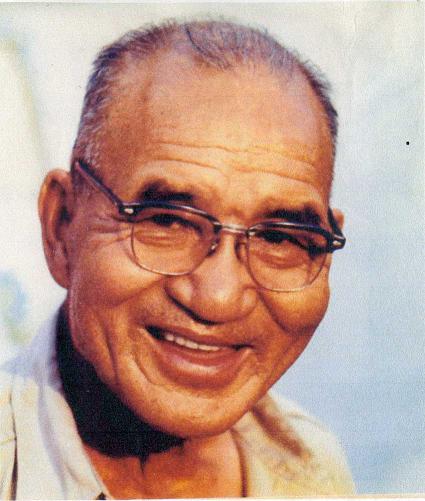
Sakujiro Kawaguchi
Location during WWII, if not in a camp:
Layton, Utah
Sakujiro
Kawaguchi
Remembrance of My Father
I was 13 years old and the oldest of three sisters when Japan attacked Pearl Harbor. We were flower growers on Dominquez Hill in Los Angeles County. Farming life was very hard for my mother who was never a physically robust person. When I look back on the decision my father had to make because of Executive Order 9066, it took courage and wisdom to evacuate our family to Utah.
1942 was the year my father hoped to get us out of debt with the quality stocks he had planted for the spring flower market. But we had only a 3 week window of time in which to evacuate and there was much to do: (1) contact our potential sponsors in Utah (no other state in the USA would accept Japanese from the west coast without a sponsor in their state as they didn’t want thousands of Japanese on their welfare roll), (2) get a buyer for our potential stock harvest and other flowers we had growing at the time, (3) organize what to take and what to leave behind in a shed, (4) get permission from the government to make the move once our sponsors which consisted of our immediate family and extended family in which our father was the senior male leader.
In Utah, our father found and worked at two jobs: one for the sugar beet factor and the other shift at Pierce Canning factory while sharing cropping an acre of peas. Like the Latino migrant workers, everyone in Utah worked very hard during the season from thinning sugar beets, picking fruits and vegetables as they ripened, and finally topping the sugar beets at the end of the season. Laborers were in short supply during the war so that the school year was organized around using child labor.
Housing was also scarce and my own children find it hard to believe we lived in a log cabin (later hit by lightning while we were sleeping); a chicken coop which had been fumigated but the bed bugs lived and so my sisters and I had to haul out mattresses every weekend to kill them manually! Our last house was a concrete block government housing project.
When I look back on those years in Utah it was quite a challenge for all of us. We worked hard like migrant workers from dawn to dusk; the weather was more extreme than what we were used to in Southern California and our mother developed tuberculosis. We took care of her in the chick coop and we were cautioned by our parents not to tell anyone as we would be ostracized by the community.
Once I asked my father why he made the decision to evacuate and he said: (1) because of mother’s poor health, he was afraid she couldn’t handle the initial extreme privations of camp life, (2) because he would lose his role as the head of a family which turned out to be true in camp life. He guided three young men whose father was immediately picked up by the FBI and sent to Sante Fe; the oldest was married to my cousin and they had their first child in December 1941; the second son had married recently and the third son was of college age while their mother was nearing retirement age. Then my father had his own family, a wife and three daughters who were now 14, 13, and 11 years old.
This remembrance is in honor of my honest, hard-working father and to the larger community that was not aware of or couldn’t get a sponsor in that period in which we could evacuate out of the west coast. Last but not least, we are grateful to the Miyagishima family that sponsored us in Layton, Utah.
Respectfully submitted in Remembrance of my Father, Sakujiro Kawaguchi.
—Kristine T. de Queiroz